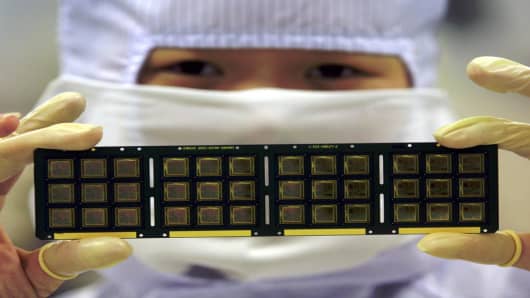The Semiconductor Industry Association, or SIA, said Monday that worldwide sales of semiconductors grew 5.9 percent in April 2007 on a year-over-year basis, but sales were flat compared with March.
April sales grew to $21.2 billion, from $20.1 billion in the prior year. March 2008 sales also totaled $21.2 billion.
SIA President George Scalise called the year-over-year growth a "healthy" increase considering increased energy costs that have diminished disposable income.
Scalise noted that unit sales of personal computers are projected to grow by about 10 percent this year and handset unit sales are expected to rise around 12 percent, both in line with forecasts. "Growth in these two important end-markets is increasingly driven by sales outside the United States," said Scalise.
On the negative side, Scalise said that price erosion in memory products continues to hurt industry revenue growth. Excluding sales of memory devices, April semiconductor sales grew by more than 12 percent year-over-year.
SIA noted that the Consumer Electronics Association estimated that the U.S. economic stimulus package will generate $5 billion in additional consumer electronic purchases. SIA said the impact of the package has not yet been reflected in the data.
Year-to-date sales gained 4.3 percent to $82.9 billion, from $79.5 billion in the first four months of 2007. SIA said the April results are in line with historical industry patterns.
"From a demand perspective, it is our belief that the semiconductor industry should continue to feel the angst of slow U.S. and global economies," said Piper Jaffray analyst Gary W. Mobley in a research note responding to the sales data. "However, semiconductors are outperforming the global economy (and should continue to, in our opinion)."
For 2008, Mobley forecasts about 5 percent semiconductor sales growth with memory and 10 percent to 15 percent growth, excluding memory. "We also believe semiconductor pricing should remain firm for the balance of 2008 due to tight manufacturing utilization rates," the analyst added.


